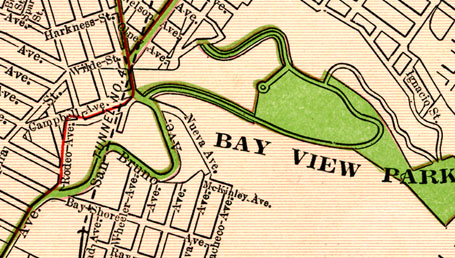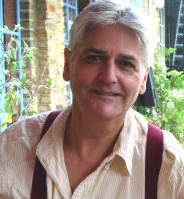Cognitive Mapping and Radio Drama by Alan Beck - Consciousness, Literature and the Arts, Volume 1 Number 2, July 2000
also at http://blackboard.lincoln.ac.uk/bbcswebdav/users/dmeyerdinkgrafe/archive/cog.html
SECTION 5
5.1 Phenomenology
My other broad frame of reference within reception theory is to phenomenology. For the radio listener, perception is interpenetrated with action, and indeed, perception and action have very similar characteristics. This is the principle of embodiment, our somatic interactivity with the world, from the phenomenologist Merleau-Ponty (1945/1962, Langer, 1989), so influential recently in film theory (Sobchack, 1992, Sweeney, 1994). To repeat: we draw on our own body's interactivity with the world. An aspect of that interactivity is our way-finding cognitive mapping. Here is Sommerhoff on embodiment as a brain connection:
Since the body functions as an important frame of reference in the perception of spatial relations, the brain's internal representations of the external world can be complete only to the extent to which they are integrated with the internal representation of body posture and movement. (Sommerhoff, 1974, 234) Note 2
5.2 Reception theory in the digital age
Discussion of reception theory, such an energetic debating area in film and performance, must also involve aspects of virtual reality (VR) or computer-generated worlds. The digital age has shifted the human sensorium and its workings (Ryan, 1999) - the principle that Marshall McLuhan called the 'massaging of the ratio of the senses' (McLuhan, 1967, 68). VR and virtual environments (VEs) include the text-based Multi-User-Dungeons or MUDs, also known as Multi-User-Dimensions. Here are some of the interesting issues: the sense of presence of a person in a VE, the degree of feelings and imaging estimated for the other (unknown, remote) person in IRC chat, and medical simulation in training doctors and computer-aided design.
5.3
Most importantly, and this encourages the inclusion of VEs in any and all reception theorizing within the digital age, there is the experience of being immersive, 'appearing' interactively onscreen as what is termed an avatar in VE games or training. The avatar is the me-there-moving-in-the-virtual-environment, linked to the me-here-in-the-Lifeworld operating the mouse and other controls. Phenomenology had already introduced us to the concept of an object as an extension of the body - a prosthesis. Examples are a walking stick and a hat.
Our connection with the on-screen avatar is even more so. In the case of the prosthesis and the avatar, we 'incorporate them into the bulk of the body itself' (Langer, 1989, 47). (See also Forrester, 2000, 2.7 on the 'outside' and the 'inside' of listening to music with headphones.)
5.4
Such new virtual paradigms help us investigate listening-in and way-finding, and also to ponder the sense of presence of radio's performers for us. In some radio plays, stereo technique may provide a sense for the listener of being in the midst of the fictional events and characters, sometimes even swirling around the listener, or rapidly projecting the listener and his or her sound centre into the events (the moving sound centre).
In fact, this was part of B.B.C. experimental formalism in the early 1970s, when stereo was introduced. This article can only suggest the possible inclusion of the VE avatar in radio reception theory, not least because the listener could also be an Internet surfer whose 'sense ratio' has been 'massaged' by such experiences (McLuhan).


Academic material on this site is  Alan Beck
is licensed under a Creative Commons Attribution-Non-Commercial-Share
Alike 2.0 UK: England & Wales License.
Alan Beck
is licensed under a Creative Commons Attribution-Non-Commercial-Share
Alike 2.0 UK: England & Wales License.
See more of Alan Beck's work.
To the WELCOME PAGE for Alan Beck's site.
Learn about radio drama on this site along with my book - Beck, Alan, Radio Acting, London: A & C Black ISBN 0-7136-4631-4
Available on Amazon. CLICK HERE.
Any opinions expressed in this site are the personal opinions of the owner of the site. IF YOU HAVE COMMENTS, PLEASE EMAIL TO : [email protected]
